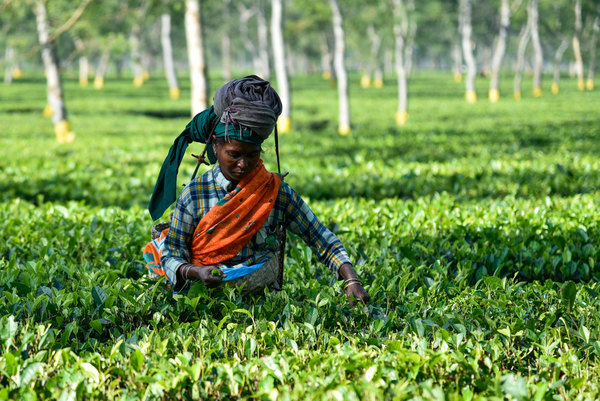COP21: Major climate deal agreed in Paris
A landmark agreement to limit global temperature rises to below 2 °C has been announced After two intensive weeks of debate the 21st Conference of the Parties (COP21) drew to a close on 12th December with a new climate deal on the table. The ambitious global agreement commits the 195 participating parties to hold…
Tackling climate change and agriculture at COP21 – a look at the landscape approach
By Dr Trevor Nicholls, CEO, CABI At COP21 last week, the world’s leaders agreed on a way forward to manage climate change. Limiting global warming to less than two percent was undoubtedly a landmark decision and, for the first time, there was unanimous recognition that humans impact the climate and that humans must do something about…
What is a sustainable diet? – a vision from the FENS conference
Climate change may be on everyone’s lips, but we are only just beginning to see how our diets might need to change to help prevent it and deal with the challenges of a growing population. I heard more about the question of sustainable diets at a series of sessions at the FENS conference on nutrition…
Farming tropical insects to feed the world in 2050
Farming edible insects to provide protein for people and in animal feed is seen as a way to meet food demands of the world’s population in 2050. Dr Sarah Beynon, an entomologist, was a guest on BBC radio 4 programme Midweek[18th November 2015] & fellow guests were invited to try cricket flour cookies and mealworm burgers. She is on a mission to both educate the UK public on the importance of insects (including wasps and spiders) and to provide sustainable food by farming tropical insects. CABI’s role in ProteINSECT, the EU project trialling insect protein in animal feed, is highlighted.
The sugar industry and the World Health Organization – still at odds
I recently attended the International Sugar Organization’s annual conference in London, hoping to hear Dr. Francesco Branca of the World Health Organization explaining the rationale for the WHO’s recommendations on how much sugar people should eat, and see what response he got from the assembled sugar industry representatives and how he responded to that. As…
Ambitious landscape restoration target may be within reach
In September 2011, at a high-level meeting of world leaders, the Bonn Challenge was launched, with an ambitious goal to restore 150 million hectares of the world’s degraded and deforested land by 2020. This target was recently supplemented by the New York Declaration on Forests, which added an further 200 million hectares to be restored…
A look at development influences on traditional food systems in Nigeria
Bookie Ezeomah, marketing intern at CABI, talks about her studies in Nigeria and the UK focusing on agriculture and food security Food security, poverty, Africa and sustainable development are buzz words and phrases that punctuate most development discourse these days. I come from a developing country and was one of those who became so fatigued…
Misshapen fruit and ugly veg….is it time that retailers relaxed cosmetic specifications?
Would you eat a carrot with three roots or an overly curved cucumber? The contribution of "ugly" fruit and vegetables to food wastage is not a new problem but one that has moved in and out of the spotlight for several years. A new BBC production "Hugh’s War on Waste", fronted…
Taking responsibility for wildlife – World Travel Market discusses tourism and animal welfare
Welfare and conservation aspects of wildlife tourism and attractions have been in the news lately, with a major study on conservation and welfare at wildlife attractions just published in PNAS, and another recent study suggesting that nature tourism may affect how predators and prey interact. Yesterday saw wildlife and national parks discussed in a seminar…
Global food and poverty issues on the table
Awareness on global food and poverty issues was raised last weekend as the World Food Day was observed on the 16th of October followed by the International Day for the Eradication of Poverty on the 17th. Both days were highly topical since eradicating poverty and improving food security were the first two goals listed in…

